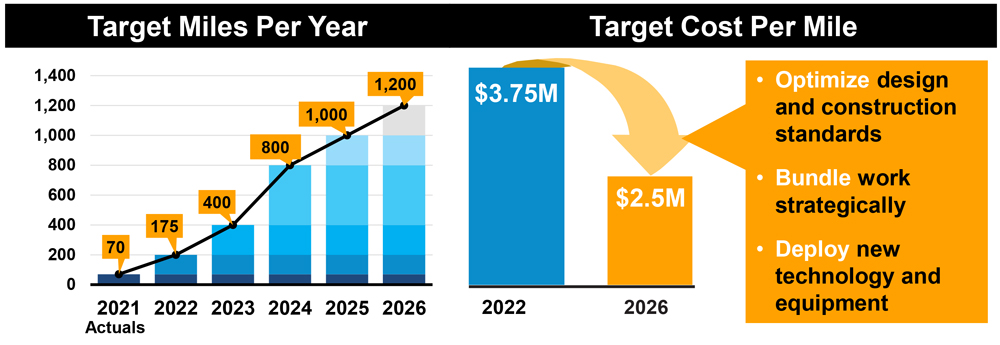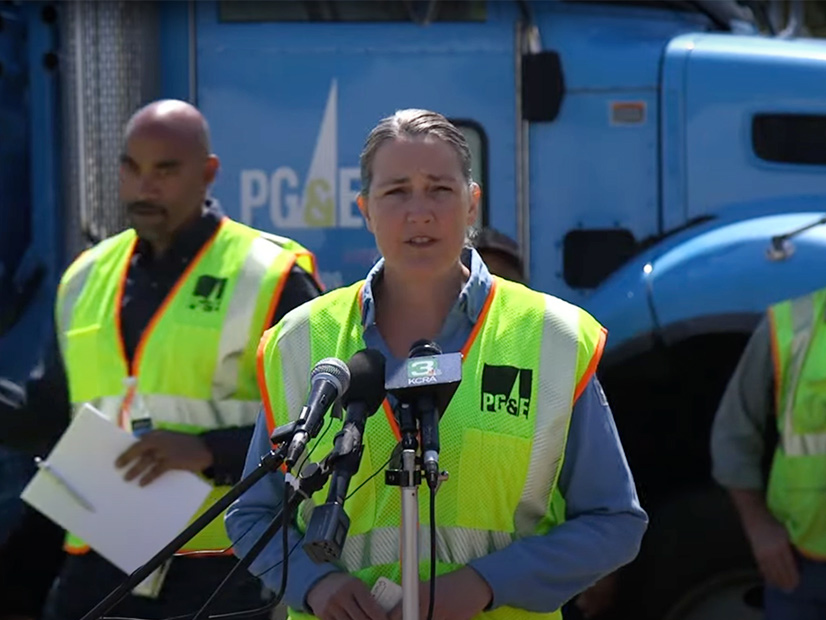Pacific Gas and Electric’s plan to underground 10,000 miles of power lines in high fire-threat areas would cost more than $25 billion, even assuming costs per mile decline over time, the company said Thursday.
It was the first time the utility has put a price tag on its proposal, which CEO Patti Poppe announced in July. (See PG&E Proposes Undergrounding 10K Miles of Distribution.)
“Today we’re providing the first look at the next five years of our undergrounding plan.” Poppe said during PG&E’s fourth-quarter earnings call. “It’s big and it’s bold. We’re moving on our commitment to underground 10,000 miles of power lines in our high fire-risk areas. Undergrounding is a strong long-term solution for PG&E to reduce wildfire risk in certain parts of our service area.”
California’s largest utility (NYSE:PCG) expects to spend $3.75 million per mile to bury 175 miles of lines this year, but Poppe said it could bring the cost down to $2.5 million per mile by 2026 through efficiencies of scale and technical advances.
PG&E equipment has been blamed for a series of catastrophic wildfires starting in 2015 and extending through last year’s Dixie Fire, which burned close to 1 million acres. The fires included the 2018 Camp Fire, which leveled the town of Paradise, killed 84 people and drove PG&E to file for bankruptcy reorganization in January 2019.
As part of its plan to prevent future fires, PG&E intends to underground 3,600 miles of line by 2026, with sizable increases year over year, including 400 miles in 2023, 800 miles in 2024 and 1,000 miles in 2025.

The full plan has not been considered by PG&E’s regulator, the California Public Utilities Commission. Asked about that by an analyst, Poppe said the CPUC had approved some of PG&E’s undergrounding work under prior wildfire mitigation plans. (The utility buried 70 miles of line last year.)
PG&E will seek additional approval for its “game-changing investment” in its 2022 wildfire mitigation plan, due Feb. 25, and as part of its 2023 general rate case, she said.
If approved by the CPUC, PG&E’s capital expenditures would increase over the next four years, but long-term cost savings “will reflect a minimal impact to customers relative to our previous filings,” Poppe said.
“Undergrounding is a great example of our simple and affordable model in action,” she said. “We invest in really high value capital infrastructure and reduce our spend on temporary repairs and annual recurring expenses.”
“We will protect our customers from energy bills they cannot afford with a cost discipline that many of you would expect,” she said.
CPUC commissioners have expressed concern about PG&E rate increases, driven by infrastructure upgrades and high natural gas prices.
During the call, PG&E reported GAAP fourth-quarter income of $472 million, or $.22/share, and full-year losses for 2021 of $102 million, or $.05/share. In comparison, PG&E reported full-year losses of $1.3 billion, or $1.05/share, and Q4 earnings of $200 million, or $.09/share, in 2020.
After Thursday’s earnings call, PG&E’s beleaguered stock price dropped from $12.08 at 9:45 a.m. ET to $11.20/share by midafternoon, then rebounded to $11.38/share just before trading closed for the day. In August 2017, before the worst of the fires ignited by its equipment began, PG&E’s stock traded for more than $70/share.

